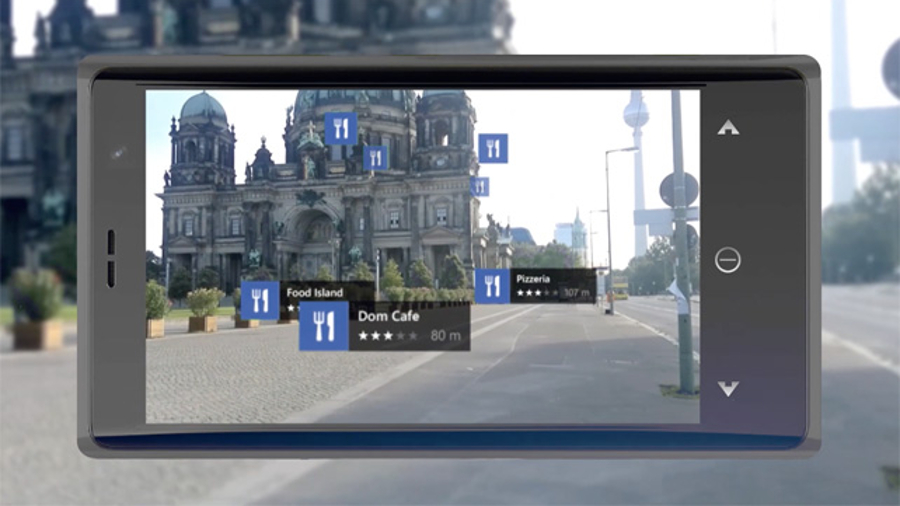How virtual maps are becoming really useful for business travel
Digital maps are becoming more like contextual assistants

After a decade of work on augmented reality on mobile devices, Daniel Kraus of Nokia's HERE Maps team thinks we're ready to get past the demos and start using phones that show us an X-ray vision of the world around us.
"We're moving from just a map for navigation that's a digital version of a paper map to a next-generation map that's much more contextual, that's much more active and dynamic, that fits in to the moment and really provides the information you need," Kraus told TechRadar Pro.
The key to giving you that moment of information is making augmented reality fit seamlessly into the digital maps we already use, Kraus says. Nokia added AR to its maps on Windows Phone last year and they quickly learned what does and doesn't work.
"People really like the idea of vital information in context and getting away from the equivalent of a paper map into the real world, but it's very important to keep the map context. If it's an augmented reality viewer that just shows stuff around you then people are confused about what it shows. Our technology, LiveSight, is integrated very tightly into the map; really it's just another map mode."
Big breakthrough
The breakthrough was building a 3D transition that morphs between the traditional overhead map view and the heads-up augmented reality view where you hold the phone up to use it like a lens on the world.
"We do a 3D transition between the orthographic map and the camera view and back," Kraus explains. "We fly the camera down through the classic oblique angle and down to the ground and you see 3D buildings pop out and into the camera view." That lets you keep track of how what you can see around you fits in with the map, which Kraus calls 'spatiality'. "One of the greatest uses of 3D is to provide the spatial connection between the heads-up view and the world around you."
So if you see an unusual building and you wonder what it is, you can pull out your phone. Instead of just looking on the map for a building, you can hold up the phone. "As you tilt the phone, the building would show in 3D. If you continue to push the phone up the building will tilt fully and fade into the building that's here in front of you," he explains. The sensors in your phone aren't accurate enough to do that on their own – "we've done a lot of registration work to get it right," Kraus notes.
Sign up to the TechRadar Pro newsletter to get all the top news, opinion, features and guidance your business needs to succeed!
Where can I go now?
What people really find augmented reality tools useful for is exploring the world right around them. "We want to explore things within two or three hundred metres of where we're standing," says Kraus. That's fun for tourists but even more useful for business travellers.
The labels you see in the camera view could tell you more than just the name of the building or business you can see, like ratings and offers. "Here are the restaurants you can see, and here are the ratings, and these two have a special on," he suggests.
If you have enough detail in your map, an augmented reality view could save you a lot of walking if you're heading into a large building like a shopping centre or an office complex. "I want to get a route to the door of the building – as a pedestrian, I could be half a mile off. Augmented reality could show me the points of interest. I want to take a quick glimpse; is it in here or how do I find it?"
HERE Maps is adding more features to make that easier. The first is showing the dynamic distance to a point of interest as you walk towards it, and the other is called Point Me There and puts arrows on-screen to point you in the direction of a point of interest.
"That solves the problem of doing a search and holding up the phone and all the Italian restaurants that are close are behind you," jokes Kraus. Getting the direction is accurate up to about 20 or 30 feet he says.
Mary (Twitter, Google+, website) started her career at Future Publishing, saw the AOL meltdown first hand the first time around when she ran the AOL UK computing channel, and she's been a freelance tech writer for over a decade. She's used every version of Windows and Office released, and every smartphone too, but she's still looking for the perfect tablet. Yes, she really does have USB earrings.